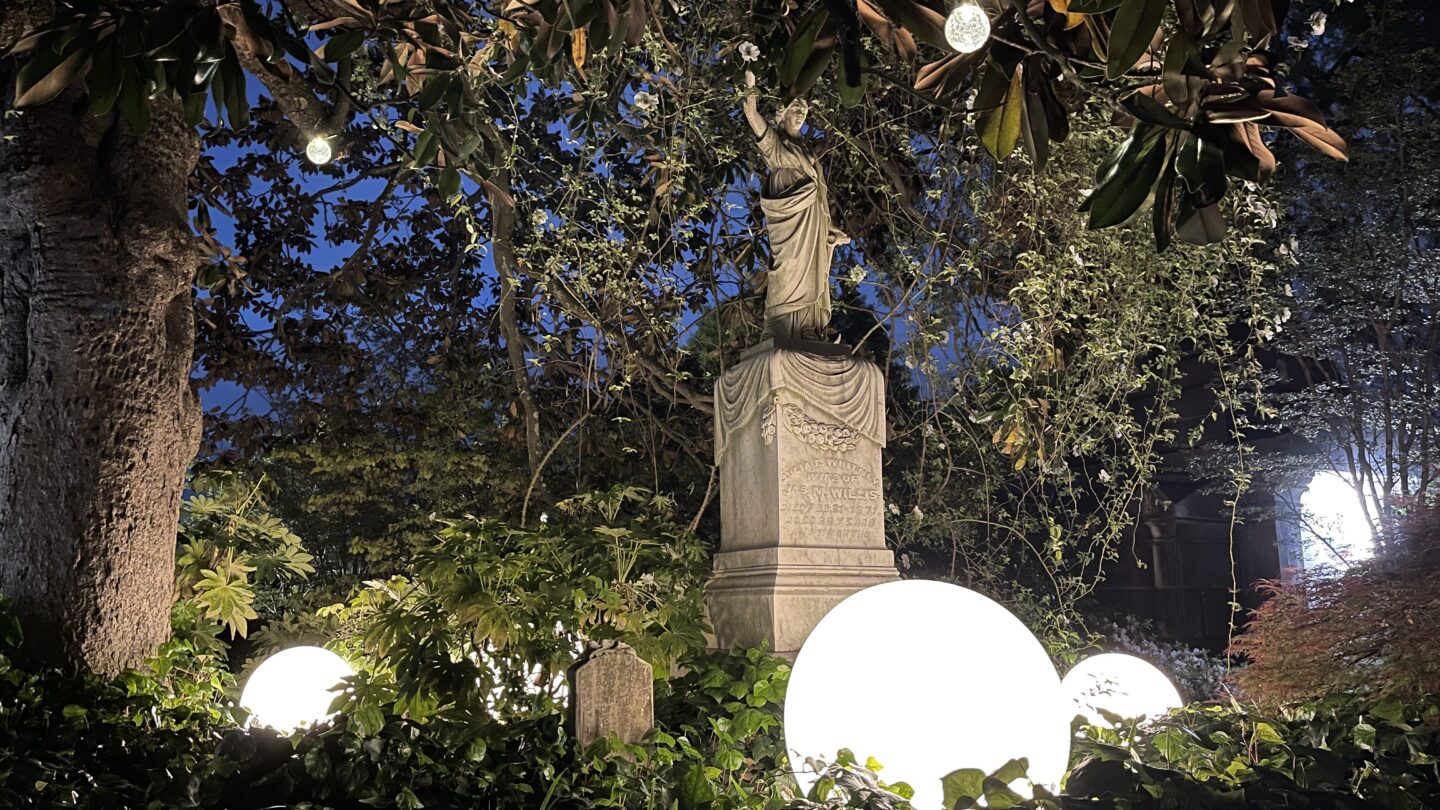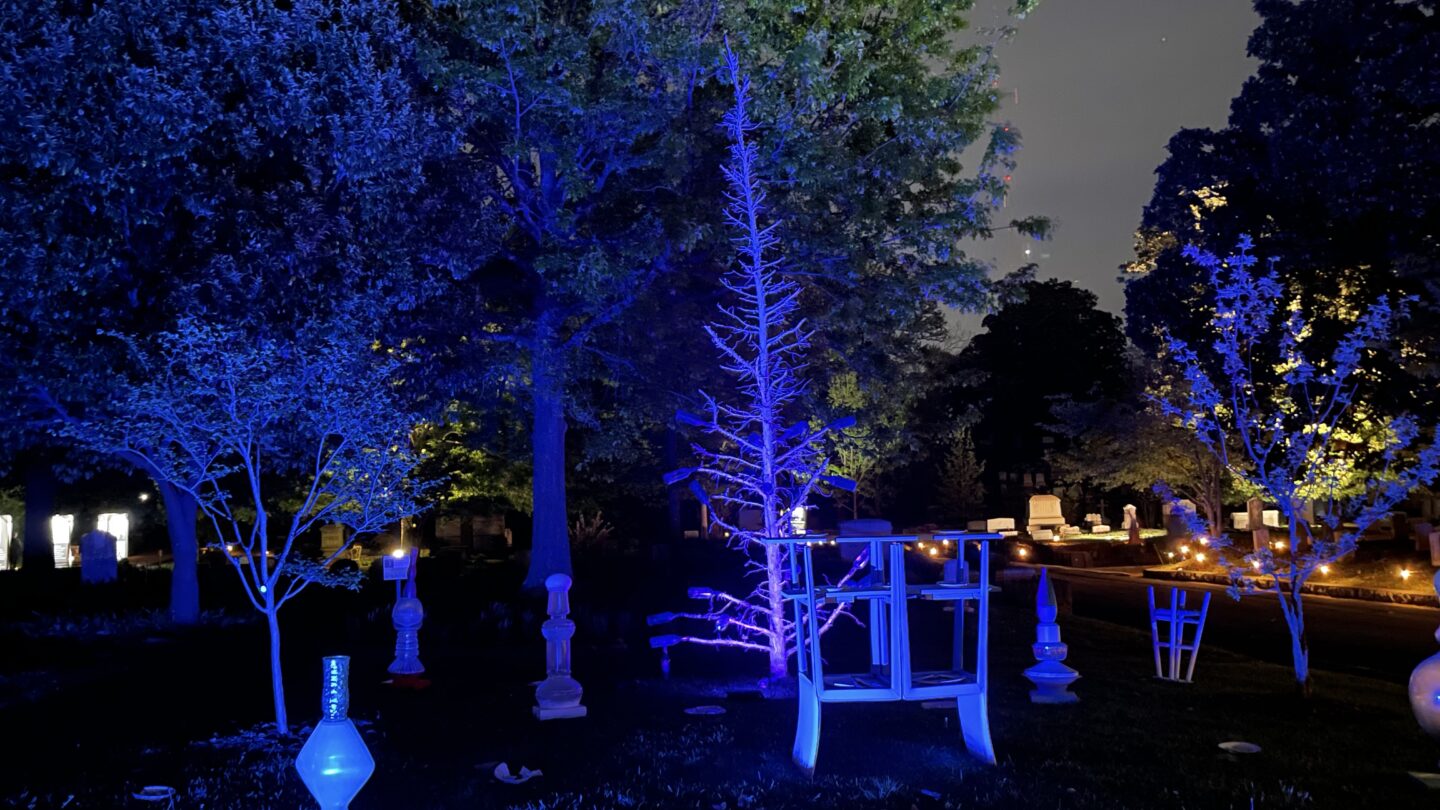Illuminating Oakland Cemetery's untold stories through an after-dark art experience

Oakland Cemetery is shining a light on some of the untold stories of the residents. After postponements due to the pandemic, their after-dark art experience “llumine” is back after a two-year hiatus. This year’s event focuses on the recently restored African-American Burial Grounds and the 1908 Women’s Comfort Station. The African-American Burial Grounds has been undergoing restoration by the Historic Oakland Foundation since 2017. Now that the grounds are restored to pristine conditions, this year’s “Illumine” is bringing some of those new sections and stories to light. “City Lights” producer Summer Evans took a trip to Oakland Cemetery to speak with the team behind “Illumine” 2022.
One of the residents highlighted on tour is one of the first black photographers in Atlanta, Thomas Askew. “Thomas Askew’s work was curated by W. E. B. Dubois for the 1900 Paris Exposition, in an exhibit that showcased middle- and upper-middle-class Black life in Atlanta at that turn in the century,” explained Mary Fernandez, Oakland’s special events and volunteer manager. These elegant photographs of Black life in the late 19th century are displayed not far from his final resting place, adorned with a red, glowing balloon.
The Historic Oakland Foundation commissioned several Atlanta artists, florists, and seamstresses to create installations throughout the Burial Grounds. Multi-disciplinary artist Ellex Swavoni created her installation around the unmarked graves at the African-American Burial Grounds. Specifically, she wanted to focus on a place of remembrance inspired by traditional African-American funerary grave practices.

“I’ve also used plates that are broken to release the spirit from the plates and also upside-down chairs. You know… give the dead a place to sit in the underworld,” said Swavoni. Blue and green lights are cast upon the monuments created out of found objects like glass bottles and vases. The colors represent the “Waterworld” that the dead were believed to transition into to reach the other side.
Along the brick pathways and the cemetery are phone booth size lanterns, each with descriptions and QR codes about Oakland’s history and residents. One of the most notable residents spotlighted (literally) is Atlanta’s first Black mayor, Maynard Jackson. Interestingly, the mayor was buried in what was initially designated a “pauper’s burial ground” for poor white citizens.
“When people think of segregations, typically what comes to mind is trolley cars or restrooms, but cemeteries were segregated as well,” said Fernandez. “When Maynard Jackson was buried in this particular site in North Public Grounds, he desegregated this whites-only section of the cemetery. And so in death, just as in life, he crossed this final color line here at Oakland Cemetery.”
“Illumine” Creative Director Cooper Sanchez also contributes flowers from his day job as a contract gardener for Oakland, and this year’s edition abounds with them. “The Victorians loved floral sprays for funerary events, but they also… loved to garden in the cemetery,” said Sanchez. “A lot of what you see, these gardens that we’ve been working on extensively for 15 to 20 years, they’re interpretations of what we think it may have looked like back in the day, 120 years ago.” Self-guided tours of “Illumine” are open April 21 through May 1 from 7:30 PM – 10:30 PM. More information is available at https://oaklandcemetery.com/event/illumine-2022/.








